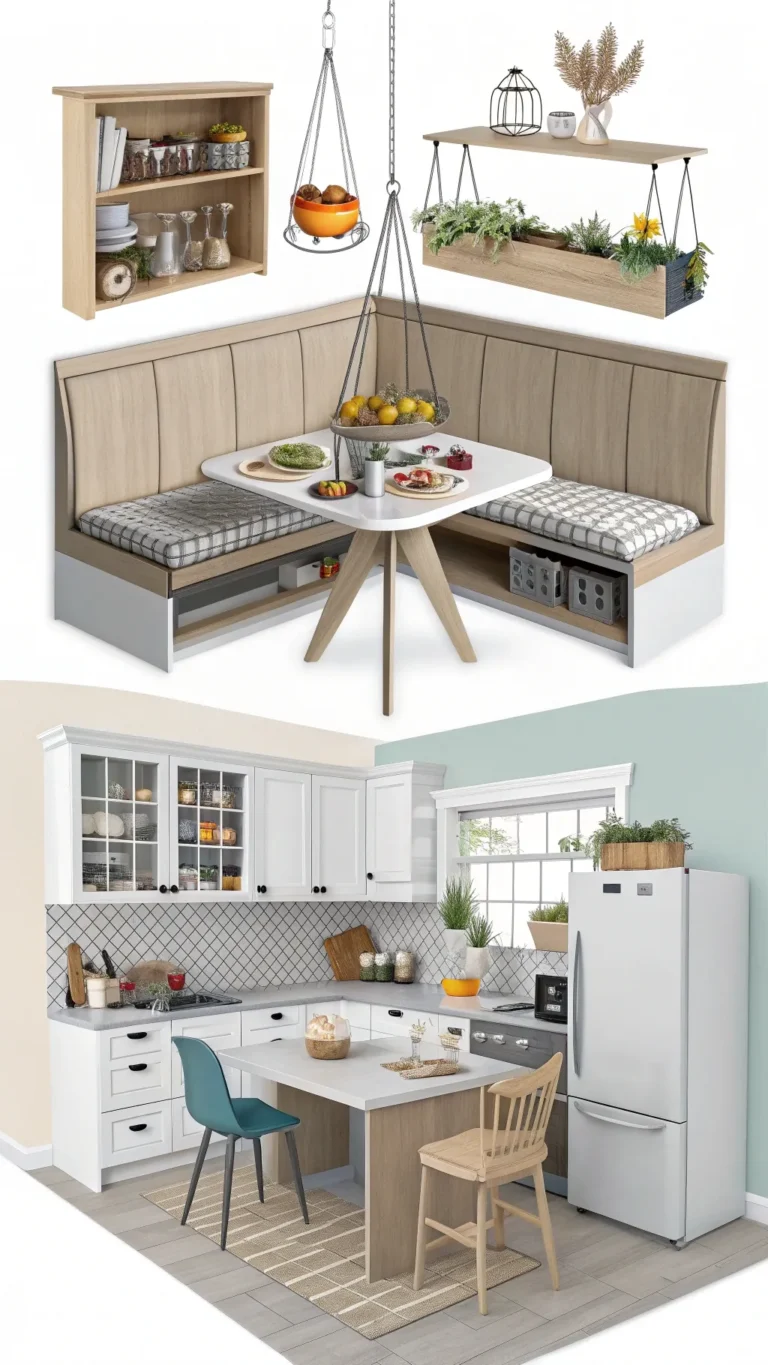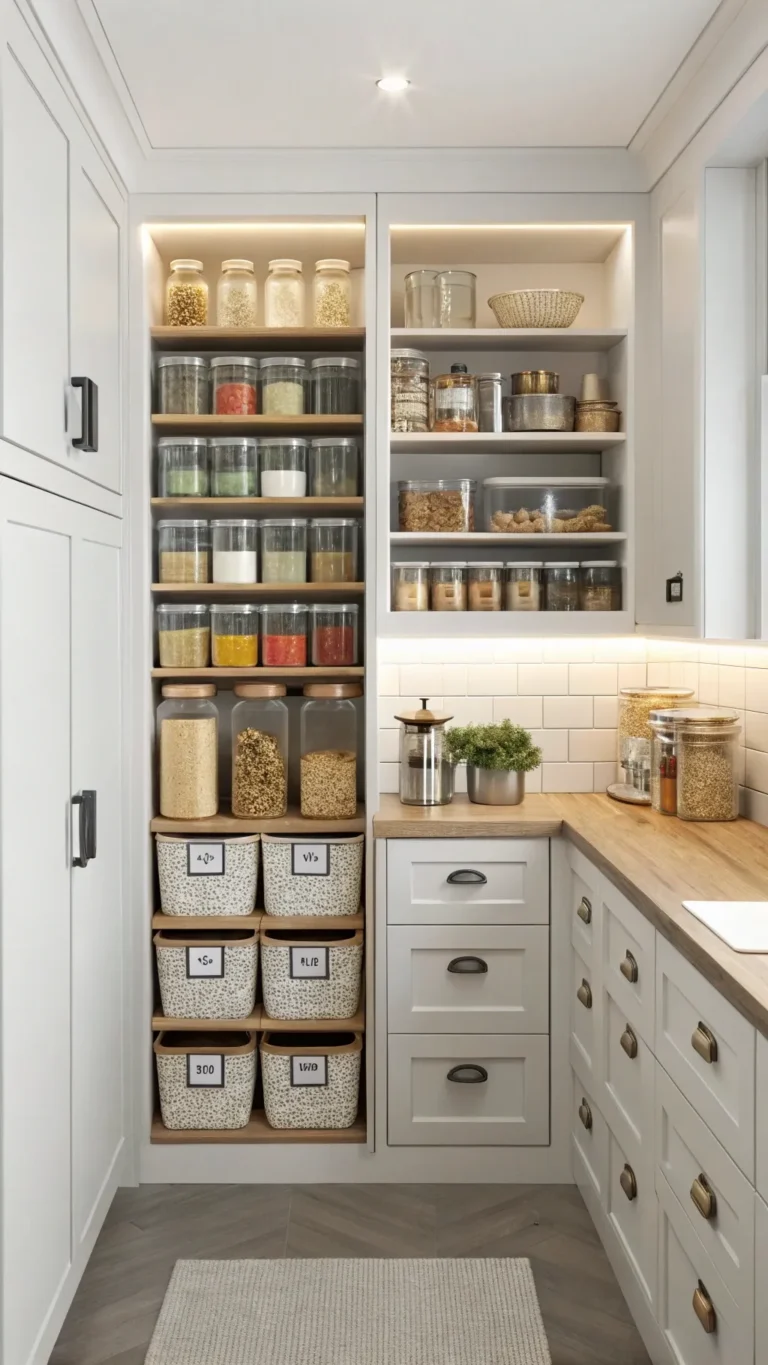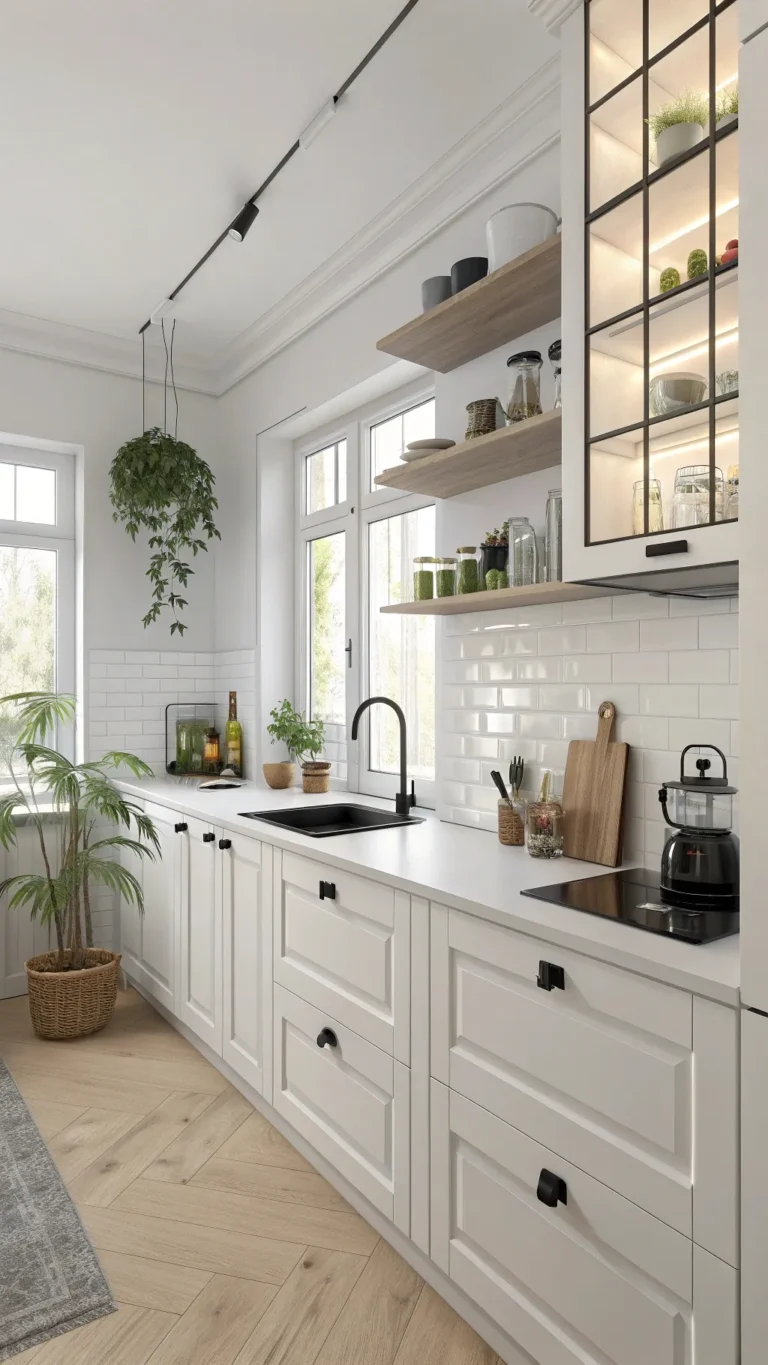I. Introduction
Snack clutter can overwhelm small kitchens quickly. Bags fall out. Boxes tumble over. You open a cabinet and find a mess. This problem feels familiar to many with limited kitchen space. Small kitchens often lack deep cabinets, pantries, or counter space. So snacks get pushed anywhere they fit. That leaves clutter and frustration.
This article shares 10 clever small kitchen snack storage ideas. These practical tips help organize your snacks even in tight spaces. From using vertical space to smart container choices, this guide covers all. You will learn how to make cabinets, drawers, counters, and even fridge spaces work harder for snacks.
Small kitchen snack storage matters. It saves space and time. It keeps snacks fresh and easy to find. Let’s explore these useful ideas to bring order and calm to your snack zones. You can create a tidy and functional kitchen without extra square footage.
II. The Snack Attack: Why Organizing is Crucial in Small Kitchens
Small kitchens face unique challenges. Many have no walk-in pantry. Cabinets are shallow or narrow. Counters fill up fast. Awkward corners hide snacks or keep them out of reach. These conditions make kitchen snack organization difficult.
Still, organizing snacks is worth the effort. The benefits go beyond tidiness:
- Reduces clutter and visual noise.
- Makes snacks easy to find, saving time especially for kids.
- Minimizes food waste by showing what you have clearly.
- Frees up valuable counter and cabinet space for cooking.
- Creates a more functional, pleasant kitchen environment.
- Lowers stress from searching for snacks or losing favorite treats.
Experts agree organization impacts kitchen use. According to the National Kitchen & Bath Association, 70% of homeowners seek better kitchen storage solutions. That includes smart snack storage, especially in smaller kitchens.
Investing time in kitchen snack organization brings daily rewards. Snacks become easy-to-access treats instead of hidden frustrations. Your small kitchen feels bigger and calmer.
III. Before You Organize: Audit Your Snacks & Your Space
Smart snack storage begins with a clear audit. Taking stock helps decide what you need and where to put it.
Step 1: Gather & Declutter Ruthlessly
- Pull out all snacks from cabinets, drawers, counters, and fridge.
- Check expiration dates and toss anything old or stale.
- Remove snacks that no one eats or never reaches for.
- Combine open bags carefully or use clips to save space.
The declutter takes time but pays off. The goal is only to keep snacks worth having.
Step 2: Group & Categorize Your Snacks
Divide snacks into groups:
- By type: chips, bars, crackers, cookies, dried fruit.
- By eater: kids’ snacks versus adults’.
- By use: daily, occasional, treats.
Grouping helps assign storage zones later.
Step 3: Measure Potential Storage Spaces
Measure spots where snacks can fit:
- Cabinets (height, width, depth).
- Pantry shelves if available.
- Drawers and counter corners.
- Inside cabinet doors for hanging organizers.
Look up and down. Vertical space hides great potential.
Mini Checklist for Your Audit
- [ ] All snacks gathered?
- [ ] Expired snacks discarded?
- [ ] Snacks grouped by category?
- [ ] Spaces measured, including vertical?
This step prepares you well. A well-organized snack zone depends on knowing what and how much you have.
(For more tips on kitchen decluttering, read Decluttering Your Kitchen.)
IV. Look Up! Utilizing Vertical Space & Doors for Snack Organization
Idea 1: Stackable Bins & Containers
Stackable clear containers work wonders in small spaces. Choose airtight plastic or glass containers. They keep snacks fresh and visible. Uniform shapes make stacking neat and stable.
Sizes vary. Larger containers for chips, smaller for granola bars or nuts. Stack sets in cabinets or on pantry shelves. This approach uses vertical space by building upwards, not outwards.
Clear containers help spot contents quickly. That reduces leftover snacks hiding behind others.
(Psst, see our guide for Best Airtight Food Storage Containers.)
Idea 2: Tiered Shelving Inserts
Tiered shelves create a double or triple layer in cabinets. Perfect for small snack boxes, jars of nuts, or dried fruit. You see items on both levels without stacking and shuffling.
Materials range from sturdy wire racks to bamboo wood. Choose one that matches your kitchen style. Plastic models are budget-friendly and lightweight.
Tiered shelves turn shallow cabinets into more efficient snack zones.
Idea 3: Over-the-Door Organizers
Use the inside of pantry or cabinet doors with organizers. Wire racks or fabric pockets hold snack pouches, bars, or small boxes.
Measuring doors helps select the right size. Check clearance so doors close smoothly. Over-the-door baskets keep snacks front-and-center, easy to grab yet off counters.
A mom of three shares, “This organizer saved my sanity. Kids stop digging and grab snacks themselves.”
Together, these vertical ideas open new snack storage areas without extra shelves.
V. Deep Dive: Cabinet & Pantry Snack Solutions
Idea 4: Pull-Out Drawers or Baskets
Deep cabinets often swallow snacks in the back. Pull-out baskets or drawers bring everything forward. Slide out to find what you want instantly.
Wire baskets offer airflow; plastic bins handle heavier snacks. Some models include handles for easy pull-outs.
Great for bulk snacks or larger bags. Keep your night owl’s favorite popcorn easy to reach.
(Check out Top Kitchen Cabinet Organizers for options.)
Idea 5: Lazy Susans (Turntables)
Corner cabinets cause lost snack items. Lazy Susans spin contents into view. Place jars of nuts, dried fruit containers, or small snack boxes on them.
They reduce bending and stretching into corners. Plus, they quickly reveal what’s inside.
Lazy Susans vary in size and tiers. Choose one that fits your cabinet dimensions.
Idea 6: Magazine Holders or File Boxes
This hack stuns with simplicity. Place upright snack boxes or juice pouches in magazine holders. They keep things contained and standing tall.
Look for sturdy plastic or wire holders. Label them to separate kids’ snacks from adults’.
This budget-friendly trick tames small kitchens effectively.
VI. Don’t Forget These Spots: Counter, Drawer & Cold Storage
Idea 7: Aesthetic Countertop Jars & Bins
Keep favorite snacks handy on counters, but don’t crowd the space. Use clear glass jars or ceramic bins that match your kitchen décor.
Granola bars, nuts, or fresh fruit look inviting here. Choose lids for freshness. Avoid clutter by limiting the number of jars.
Stylish containers add charm and function.
Idea 8: Drawer Dividers & Inserts
Transform drawers into snack drawers with dividers. Adjustable inserts separate granola bars, pouches, and small bags.
This turns a usual junk drawer into a snack zone. Easy to maintain and access.
It’s a simple way to create order in a drawer.
Idea 9: Dedicated Fridge/Freezer Bins
Some snacks need cold storage: yogurt tubes, cheese sticks, fruit cups, frozen berries. Clear bins keep these grouped.
Bins stop small items from falling behind fridge shelves. They make inventory visible and reach easy.
Label bins for quick identification.
Idea 10: Create a Mini Snack Station
Reserve a small shelf, counter corner, or rolling cart just for snacks. Gather all snack accessories: containers, napkins, labels, and bins.
This keeps snacks centralized. Grab and go becomes simple, even in a tiny kitchen.
Compact snack stations streamline routine snacking.
VII. Selecting the Best Storage Solutions & What’s New in 2025
A Guide to Snack Storage Container Types
| Material | Features | Pros | Cons | Cost | Durability |
|---|---|---|---|---|---|
| Plastic | Lightweight, stackable, airtight options | Affordable, clear, shatterproof | Can stain, less eco-friendly | Low-Mid | Good |
| Glass | Clear, airtight | Non-staining, eco-friendly | Heavy, breakable | Mid-High | Very Good |
| Bamboo | Natural, stylish | Sustainable, lightweight | Not airtight, pricier | Mid | Moderate |
| Fabric | Soft bins, pouches | Flexible, breathable | Not airtight, limited uses | Low | Moderate |
Choosing depends on priorities: durability, eco-impact, or convenience.
Other Essential Organizers
- Bins and baskets: wire, plastic, fabric.
- Dividers: drawer and shelf types.
- Labels: bright, clear, reusable.
- Hooks and clips: for hanging bags or tools.
Labels help family members keep order. They reduce confusion about snack zones.
Smart & Sustainable Snack Storage Trends for 2025
Simple inventory apps track snack supplies digitally. They reduce impulsive buying and food waste.
Modular storage adapts to irregular spaces, making odd cabinets usable.
Sustainable materials work their way into popular designs. Recycled plastics, bamboo wood, and glass containers catch attention for eco-conscious kitchens.
Architectural Digest highlights “eco-friendly storage rising fast in 2025.”
VIII. FAQs: Tackling Your Small Kitchen Snack Storage Challenges
Q1: How do I store open bags of chips in a small kitchen?
Use airtight clips or transfer chips to clear containers. Keep containers stackable and in a consistent spot to save space.
Q2: How can I organize snacks for picky kids in a tiny kitchen?
Create a low snack drawer or use an over-the-door organizer at kid height. Group snacks by preference. Label sections for easy access.
Q3: Where should I create a dedicated ‘snack zone’ if I have no pantry?
Use a cabinet with pull-out baskets or a countertop corner with attractive jars. Don’t forget inside cabinet doors for extra storage.
Q4: Are clear snack containers worth the investment?
Yes. Visibility reduces waste and speeds up snack grabbing. Choose airtight containers for freshness.
Q5: How often should I reorganize my snack storage?
Every 3-6 months or when snacks start to overflow. Regular mini-checks prevent clutter build-up.
These answers help you maintain a stress-free snack zone in small spaces.
IX. Conquer Snack Clutter and Reclaim Your Small Kitchen
Smart small kitchen snack storage helps fight clutter. Using vertical space, containers, and creative organizers, you can turn chaos into order. These ideas bring benefits beyond neatness: less waste, faster snack grabs, and a happier kitchen.
You don’t need a large pantry. Measuring spaces and grouping snacks prepare you well. Starting small works too. Pick one or two ideas from this list. Try stackable containers or a pull-out basket. See the change.
Share your tips or questions. Let’s make small kitchens work better, one snack zone at a time. Your small kitchen can hold all your favorite snacks neatly and simply.
Explore Best Airtight Food Storage Containers, Pantry Organization Hacks, and Top Kitchen Cabinet Organizers for detailed product picks.
For sustainable kitchen storage trends, visit Architectural Digest.






